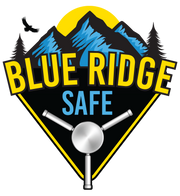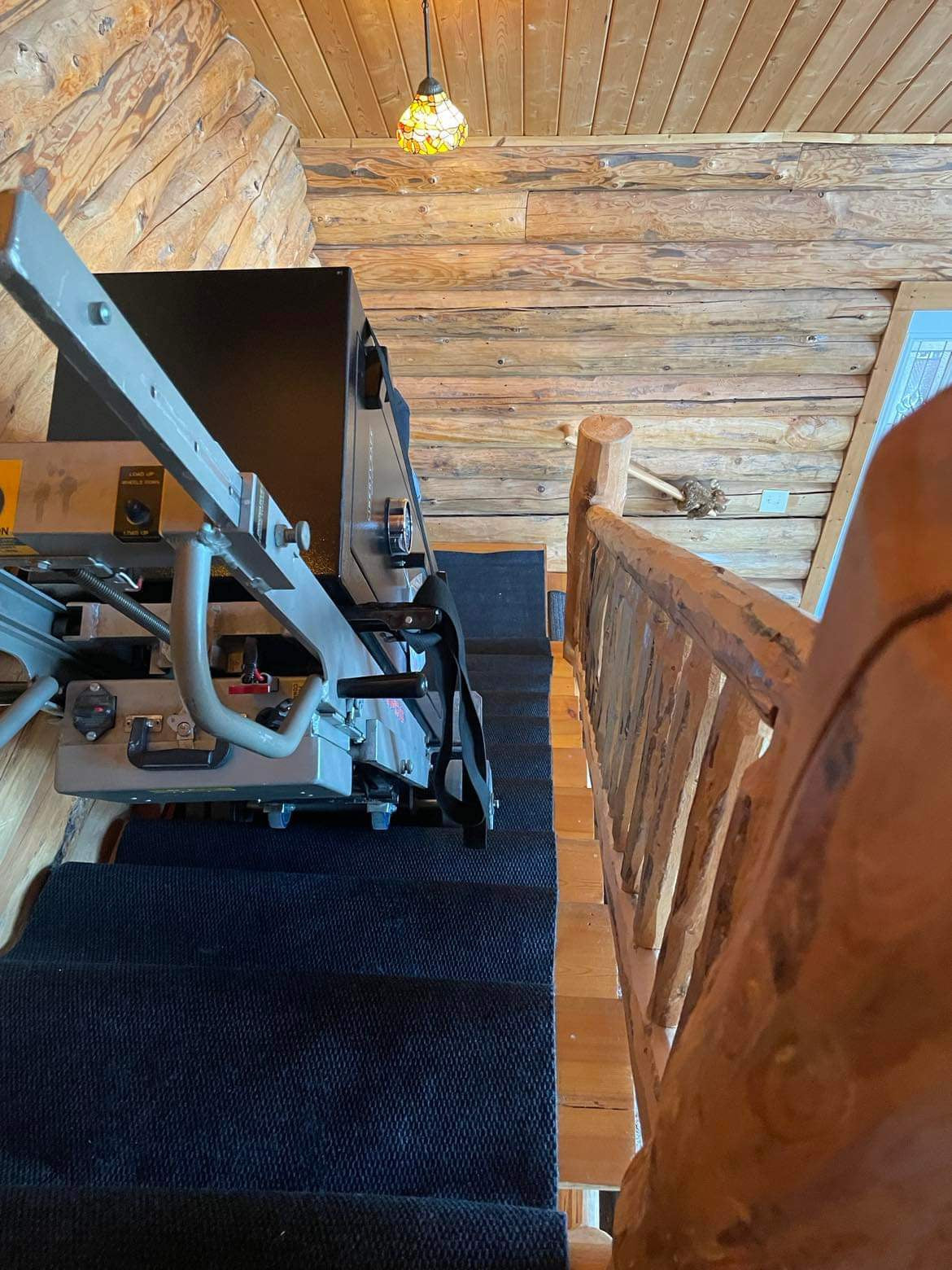One of the most asked questions of our experts at Blue Ridge Safe is, "Can I have my new safe installed on the second floor or basement?" The short answer is yes. Our delivery experts have installed safes on the third floor of a home, the tenth floor of an office building, and the basement of a ranch home. If it is physically possible for the safe you have chosen to pass through steps, we will figure out how to make it happen. This article will discuss how to get a safe upstairs and what to consider when buying a safe.
What to consider when choosing a second-floor safe
In our years of safe installs, we have put hundreds of safes on upper floors and basements. However, there has been the occasion that the safe will not pass through to its destination. Although rare, here is a list of factors to consider when selecting your safe for an upper-floor install.
- Overhead obstructions. This is most common in older homes. A stair riser that may have not been cut steep enough. A good rule of thumb is if a six-foot-tall man can't walk down the stairs without having to duck, it may be too low.
- Narrow stairwell. This one may be obvious, but if your stairwell measures smaller than your selected safe's depth, it will not work.
- Small landing. Suppose your stairs include a landing—a good rule of thumb for those is at least six feet of clear area. If your landing is smaller than this, you should consult with our Delivery Experts to help make the proper selection for you.
- Narrow step treads. This is another issue that usually only arises in older homes before there were building codes. If you have standard eleven-inch step treads, you are good. Suppose yours measures less than that; alert your Delivery Expert. Depending on the size of your selected safe, we may need to choose a different route.
- Overall step integrity. Again, this may seem obvious as well. However, placing a safe on those steps may be unsafe if your step's structural integrity is compromised due to rot, mildew, or poor construction quality.
- Upper and Lower landings. We saved the most common one for last. This can be an issue on any size home of any age. The reason is simple: builders don't have to build homes with large landings at the top or bottom. As with the mid-landing, a good rule of thumb is at least six feet of clear span at the top and bottom of the stairs. The reason is to have room to balance the safe on the wheels of the stair-climbing hand truck. This distance directly depends on your selected safe size and weight. The bigger the safe, the larger the area that is needed. Smaller safe, less landing area is necessary.
Will you install the Safe I bought elsewhere?
Absolutely! We have helped many folks install their safes, even if they didn't buy them from us. Here are a couple of things for you to consider.
- Schedule your installation beforehand. Very often, we find that customers get their safe sitting in their driveway with no way to get it inside and call us in a panic. While we are sympathetic to everyone's pain, our delivery crew is usually scheduled weeks in advance. Let us get your installation scheduled before your safe arrives.
- As our safe Experts did not help you select your safe, a sight survey may be necessary before we can accurately quote a price to install your safe on an upper floor or basement. This will often have to be done on the day of installation.
How Heavy of a Safe can I put Upstairs?
While weight is and should be a factor when selecting a safe for upstairs, it is often less of a factor than you might think. At Blue Ridge Safe, our Delivery Experts have the knowledge, tools, and, most importantly, the experience to put your safe where you want it.
Will it damage my stairs?
We cover your stairs as needed to prevent any damage to your stairs. Years of experience have taught us when and where covering, and even extra covering is required to prevent damage to the stairs and the safe.
Will my steps hold it?
While it's impossible to answer this for every case, the answer is most likely yes. Modern homes are built well. Our Expert Delivery Team will assess your home to be sure there is no danger to your home or your safe before they begin installation. If there is an issue, we will only proceed once a solution has been agreed upon.
How heavy of a Safe will my second floor hold?
The weight of the safe is rarely a factor. While every situation needs to be evaluated on its own, most houses, especially modern homes, are built to hold plenty enough to support most safes.
Think about what is already on your second floor now. Bed, what does it weigh with you and your significant other in it? 400-500 pounds. How about one of the heaviest items in your house, your bathtub? What does it weigh full of water and a person in it? Water weighs about eight pounds per gallon. If you have a large garden tube holding 80-100 gallons, add yourself 800-1000 pounds.
If you have doubts, reach out to our Expert Delivery Team. They have been there and done that and can guide you to the safe that is right for you. Wilkesboro 336-990-9556.
Can my Second floor Safe be moved?
Of course. Unless the geometry of your house has changed since your safe was installed, it should come out the same way it came in.
Example: The safe was placed before the stair handrail was installed.
We hope this article has been helpful on how to get a safe upstairs. The Delivery Experts at Blue Ridge Safe are here to help no matter where your safe came from. Feel free to reach out to us for any of your Safe needs

